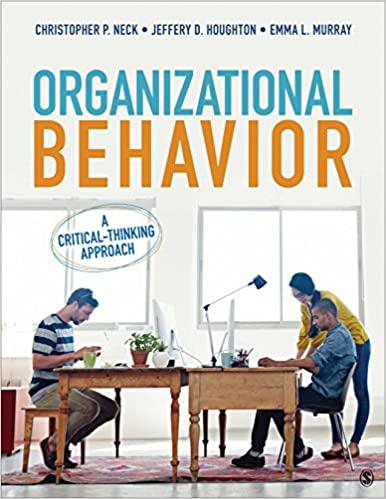A mind-boggling array of shoes and merchandise, free return policy, and extraordinary customer service helped Zappos reach
Question:
A mind-boggling array of shoes and merchandise, free return policy, and extraordinary customer service helped Zappos reach $1 billion in sales in its eighth year of operation—making it one of the most successful Internet retailers in history and culminating in its purchase by Amazon for nearly $1 billion in 2009. But it’s the quirky HR policies and emphasis on happiness and human connection that have earned Zappos thousands of loyal customers and a regular presence on lists of the “Best Places to Work.”
Zappos got its start in 1999 when founder Nick Swinmurn pitched the idea of selling shoes online to venture capitalists Tony Hsieh and Alfred Lin. While Hsieh admits he had his doubts, shortly after the launch he jumped on the opportunity to become co-CEO and began developing his “dream corporate culture” and people-centered management style not long after.
Hsieh had sold his start-up, LinkExchange, to Microsoft for $265 million in 1999. But the reason he agreed to sell wasn’t price; it was culture. With a hiring strategy based on skills and expertise only, LinkExchange’s culture went from exuberant to downtrodden. Hsieh pledged that he’d never run a company that way again and became intrigued with the idea of creating a corporate culture that was everything his earlier start-up was not. He hit the mark with Zappos, which considers itself a customer service company that happens to sell online merchandise.
Something of a philosopher, Hsieh has used Zappos to test his theories on happiness, which is what he claims the company strives to provide. But Zappos doesn’t go about ensuring happiness in the typical way. Its salaries aren’t great—they are often below market, in fact, and except for 100 percent paid health care benefits, there are few perks. There are, however, lots of great intangibles: nights out with bosses and coworkers that Hsieh often attends; a nap room; a requirement that managers spend 10 percent to 20 percent of their time “goofing off” with their employees; and an emphasis on fun and “weirdness” that affords the opportunity to express yourself at work and feel empowered while doing it.
There are no limits on the time a call center operator can spend on the phone with a customer, for example (the company made headlines in December 2012 with a record- breaking call that lasted 10½ hours), and no scripts to recite. Employees are empowered to make decisions without consulting higher-ups—like offering refunds, or in one case following up a refund with flowers sent to a customer whose husband died unexpectedly after she had ordered him a pair of shoes. Employees are encouraged to be individuals and treat their customers as such—not just as sales figures. All this contributes to what Hsieh calls the “wow” factor in customer service, which keeps his turnover low and his customers coming back while singing the company’s praises to others.
“Our philosophy has been that most of the money we might ordinarily have spent on advertising should be invested in customer service, so that our customers will do the marketing for us through word of mouth,” said Hsieh. In the beginning, this was a necessity for the cash-strapped company. Now, it’s one of its greatest keys to success.
Of course, extending this much freedom to employees implies risk—and this is why Zappos goes to great lengths to make sure it hires the right employees, those who will fit within and contribute to its carefully crafted culture.
Its intensive training comes with a unique twist—at its conclusion, prospective employees are offered $2,000 plus compensation for training hours to quit. It’s Hsieh’s way of weeding out those who are in it for just the paycheck or the goodies—not the type he wants working for him. “We want people who are passionate about what Zappos is about— service. I don’t care if they’re passionate about shoes.”
In late 2013, Hsieh announced he would eliminate hierarchy and job titles in favor of the “holacracy” model in which all work is done in circles. There are “leads” but no managers; circle members make important decisions while leads simply facilitate. The idea is to eliminate politics and bottlenecks and increase innovation. Time will tell whether Hsieh’s radical makeover of Zappos’ internal workings will produce the intended results. In the meantime, the business world is watching.
Questions 1.What was Tony Hsieh’s goal regarding organization culture when he became co-CEO of Zappos?
2.Evaluate how the functions of organizational culture are implemented at Zappos.
3.What type of organizational culture does Zappos have? Explain your answer.
Step by Step Answer:

Organizational Behavior A Critical Thinking Approach
ISBN: 9781506314402
1st Edition
Authors: Christopher P. Neck, Jeffery D. Houghton, Emma L. Murray





